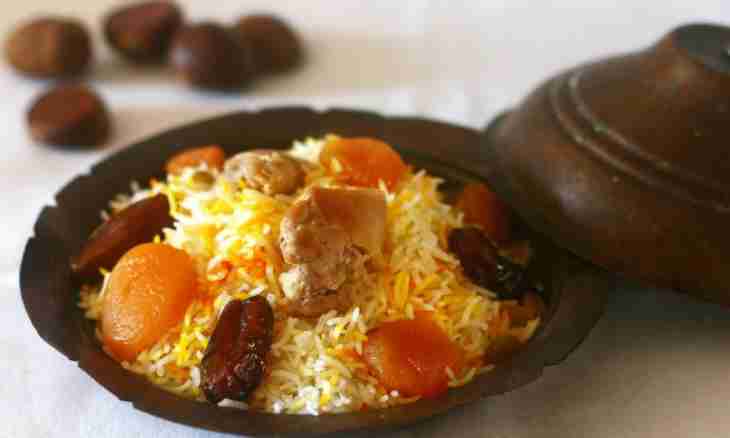Azerbaijan cuisine has common features with the Transcaucasian kitchens, at the same time it on this base created the own menu and flavoring scale giving it originality. The kitchen of this country is focused on preparation vegetable meat dishes. Long-term prescription traditions, a harmonious combination of meat and vegetable components give to Azerbaijan cuisine originality and originality.
National peculiarities of Azerbaijan cuisine
The main meat in Azerbaijan is mutton, at the same time give preference to young lambs. Veal and a various game is also very often applied (partridges, quails, pheasants, etc.). In most cases seek to use young meat since it can be prepared on naked flame. The taste of meat is combined with sour fruit (cherry plum, pomegranate, a cornel): the cornel impacts relish to veal, cherry plum — mutton, and pomegranate — a game.
Unlike the Transcaucasian kitchens, Azerbaijani uses fish which can be prepared on a brazier or a grill, baking with nuts or fruit. Also fish is prepared by method of a steam bath. Azerbaijanians prefer to use red fish.
Fruit, vegetables, herbs (especially spicy greens) use in a crude, boiled and fried look. Nearly a half of volume of any dish is the share of vegetables or greens. At preparation vegetable meat dishes meat strongly boils soft therefore such dishes represent vegetable porridge with gravy from meat. In modern Azerbaijan cuisine often apply potatoes, however by tradition didn't use this vegetable and replaced it with chestnuts. Some classical Azerbaijani meat seasonings are combined with them: the mountain (unripe grapes), plank beds (garnet and its juice), a poison ivy (barberry), an abgor (grape juice after fermentation), etc. Azerbaijanians generally use elevated vegetables (artichokes, an asparagus, cabbage, peas, haricot), seldom cook beet, radish or carrots. A spicy and savoury herbs and also nuts are held in high esteem at Azerbaijanians (a filbert, walnut, almonds, etc.). It is accepted to use green onions, leek, a melissa, fennel, garlic as seasonings to fried meat dishes. When frying use a desi. Rose-petals use as an aromatic plant for preparation of jam, syrups. A traditional national dish is the Azerbaijani pilaf for which rice is served separately from other components, without mixing them even at meal time. Rice shouldn't crack, boil soft and become sticky. That tasty Azerbaijani pilaf turned out, use only local grades of rice. As additive use meat, a game or eggs. Rice can be served a little warm that oil in it didn't cool down. On a separate dish give meat or meat - a fruit part. Thus, the real national pilaf always consists of three parts. Consumption of young meat, a game, a dairy products, greens, vegetables do Azerbaijan cuisine useful and healthy. Also Azerbaijanians limit the salt use. Meat can be served unsalted, the relish is impacted by means of fruit sourish juices.
Rules of the Azerbaijani lunch
The classical lunch lasts about 3 hours. It begins with snack (the balyk with green onions, a radish, a fresh cucumber which is jammed chureky and is washed down with ayran), at the same time vegetables give not cut. Then serve sour fruit (cherry plum, peaches). Then there comes the turn of soups — Piety, kyufta-bozbash or dovga. Further serve second courses: after Piety it is accepted to give Galya (veal with a cornel) or dolma, chickens or pheasants on a spit, after a dovga the mutton govurma can follow. Second courses plentifully are followed by spicy greens. After the second there comes the turn of the main course — the Azerbaijani pilaf. If mutton entered the previous dishes, then pilaf has to be with a bird. When soup contains a game, pilaf is cooked with herbs, fruit or eggs. After pilaf there comes the dessert in the form of raisin, dried apricots, almonds or pomegranate juice sauce. As sweet the sherbet, halvah, cookies, a kaymaka with honey can be given. Desserts are followed by tea which is had during any meal. Azerbaijanians prefer strong baikhovi tea which is had from very narrow vessels of a pear-shaped form.
